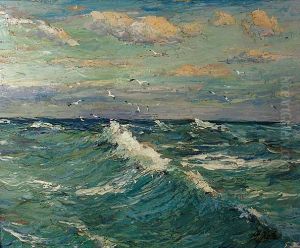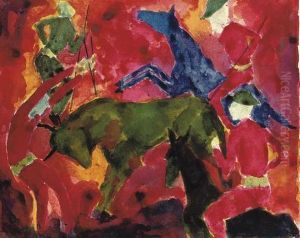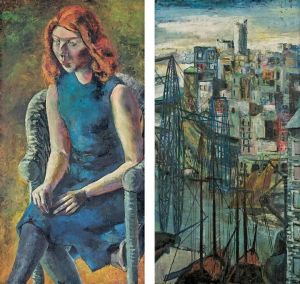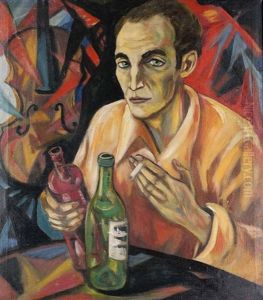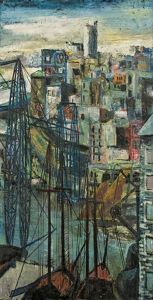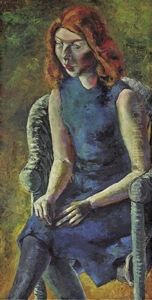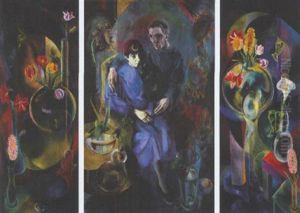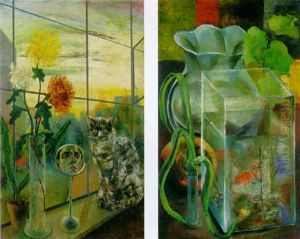Hanns Ludwig Katz Paintings
Hanns Ludwig Katz was a German-Jewish painter and graphic artist born on November 19, 1892, in Karlsruhe, Germany. Katz was an innovative artist whose work was marked by expressive use of color and form, and he is often associated with the New Objectivity movement, though his style was quite eclectic and evolved over time.
During the early 20th century, Katz studied at the Academy of Fine Arts in Karlsruhe under the tutelage of Wilhelm Trübner, a well-respected German impressionist painter. He later moved to Berlin, where he became part of the vibrant Weimar cultural scene. Katz's work during this period reflected his interest in the human condition and the social realities of the time. He painted portraits, still lifes, and urban scenes that captured the complexity of life during the Weimar Republic.
The rise of National Socialism in Germany had a profound impact on Katz's career and personal life. As a Jew, he faced increasing persecution and his work was labeled as 'degenerate' by the Nazi regime. In response to the growing hostility and the dangers it posed, Katz emigrated from Germany in the 1930s, first to France and later to the United Kingdom.
Katz's later works displayed a continued evolution of his style, often incorporating elements of surrealism. Despite the hardships he faced, he continued to express his artistic vision, though his career was significantly hampered by the political climate of the time.
Tragically, Hanns Ludwig Katz's life was cut short when he committed suicide on March 25, 1940, in London, as the trauma of exile and the destruction of the world he knew proved unbearable. Although his career was relatively brief and often overlooked in the grand narratives of 20th-century art, Katz's work remains a poignant reflection of a turbulent era in European history and a testament to the resilience of the human spirit in the face of oppression.
